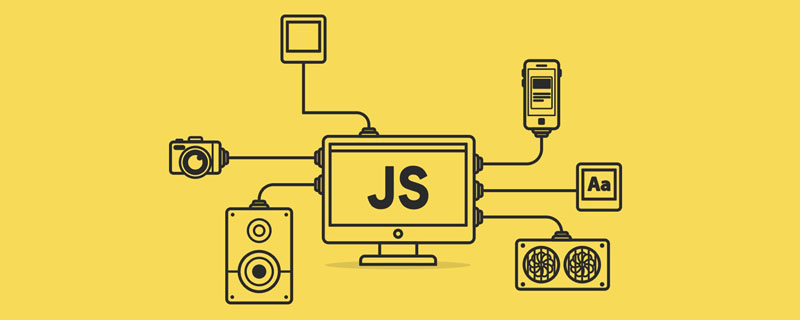javascript learning tutorialThe column introduces the use of GPU.js to improve JavaScript performance

##Recommended ( Free):
javascript learning tutorial
Have you ever tried to run a complex calculation, only to find that it took a long time and slowed down your process?
There are many ways to solve this problem, such as using web workers or background threads. The GPU reduces the processing load of the CPU and gives the CPU more space to handle other processes. Meanwhile, the web worker is still running on the CPU, but on a different thread.
In this beginner’s guide, we’ll demonstrate how to use GPU.js to perform complex mathematical calculations and improve the performance of your JavaScript applications.
What is GPU.js?
GPU.js is a JavaScript acceleration library built for the web and Node.js for general-purpose programming on graphics processing units (GPGPU), which allows you to offload complex and time-consuming calculations to GPU instead of CPU for faster calculations and operations. There is also a fallback option: without a GPU on the system, these functions will still run on the regular JavaScript engine.
When you want to perform complex calculations, you essentially shift this burden to the system's GPU instead of the CPU, increasing processing speed and time.
High performance computing is one of the main advantages of using GPU.js. If you want to do parallel computing in the browser and don't know WebGL, then GPU.js is a library for you.
Why use GPU.js
There are countless reasons why you should use the GPU to perform complex calculations, too many to explore in one article. Here are some of the most noteworthy benefits of using a GPU.
GPU can be used to perform massively parallel GPGPU calculations. This is the type of calculation that needs to be done asynchronously
- It gracefully falls back to JavaScript when there is no GPU in the system
- GPU currently runs in the browser and Node.js, perfect for passing large amounts of Compute to speed up websites
- GPU.js was built with JavaScript in mind, so these features use legal JavaScript syntax
If you think your processor is up to it , you don’t need GPU.js, take a look at the results of the GPU and CPU running calculations below.

As you can see, GPU is 22.97 times faster than CPU.
How GPU.js works
Considering this level of speed, the JavaScript ecosystem seems to have gotten a rocket to ride on. GPUs can help websites load faster, especially those that must perform complex calculations on the homepage. You no longer need to worry about using background threads and loaders because the GPU can run calculations 22.97 times faster than a regular CPU.
gpu.createKernelmethod creates a GPU-accelerated kernel ported from a JavaScript function.
Running kernel functions in parallel with the GPU results in faster calculations - 1-15 times faster, depending on your hardware.
Getting Started with GPU.js
To show how you can use GPU.js to compute complex calculations faster, let’s quickly launch a practical demonstration.
Installation
sudo apt install mesa-common-dev libxi-dev // using Linux
npm
npm install gpu.js --save // OR yarn add gpu.js
Import GPU.js in your Node project.
import { GPU } from ('gpu.js') // OR const { GPU } = require('gpu.js') const gpu = new GPU();Multiplication Demonstration
In the example below, the calculation is done in parallel on the GPU.
First, generate a large amount of data.
const getArrayValues = () => { // 在此处创建2D arrary const values = [[], []] // 将值插入第一个数组 for (let y = 0; y Create a kernel (another word for a function that runs on the GPU). const gpu = new GPU(); // 使用 `createKernel()` 方法将数组相乘 const multiplyLargeValues = gpu.createKernel(function(a, b) { let sum = 0; for (let i = 0; i Call the kernel with a matrix as a parameter. const largeArray = getArrayValues() const out = multiplyLargeValues(largeArray[0], largeArray[1])
Output
console.log(out\[y\][x]) // 将元素记录在数组的第x行和第y列 console.log(out\[10\][12]) // 记录输出数组第10行和第12列的元素
Running the GPU Benchmark
You can run the benchmark by following the steps specified on GitHub.
npm install @gpujs/benchmark const benchmark = require('@gpujs/benchmark') const benchmarks = benchmark.benchmark(options);
optionsThe object contains various configurations that can be passed to the baseline.
Go to the GPU.js official website to view the complete computing benchmark, which will help you understand how much speed you can get for complex calculations using GPU.js.
End
In this tutorial, we explored GPU.js in detail, analyzed how it works, and demonstrated how to perform parallel computing. We also demonstrated how to set up GPU.js in your Node.js application.
Related free learning recommendations:
php programming(video)
The above is the detailed content of Learn to improve JavaScript performance with GPU.js. For more information, please follow other related articles on the PHP Chinese website!

